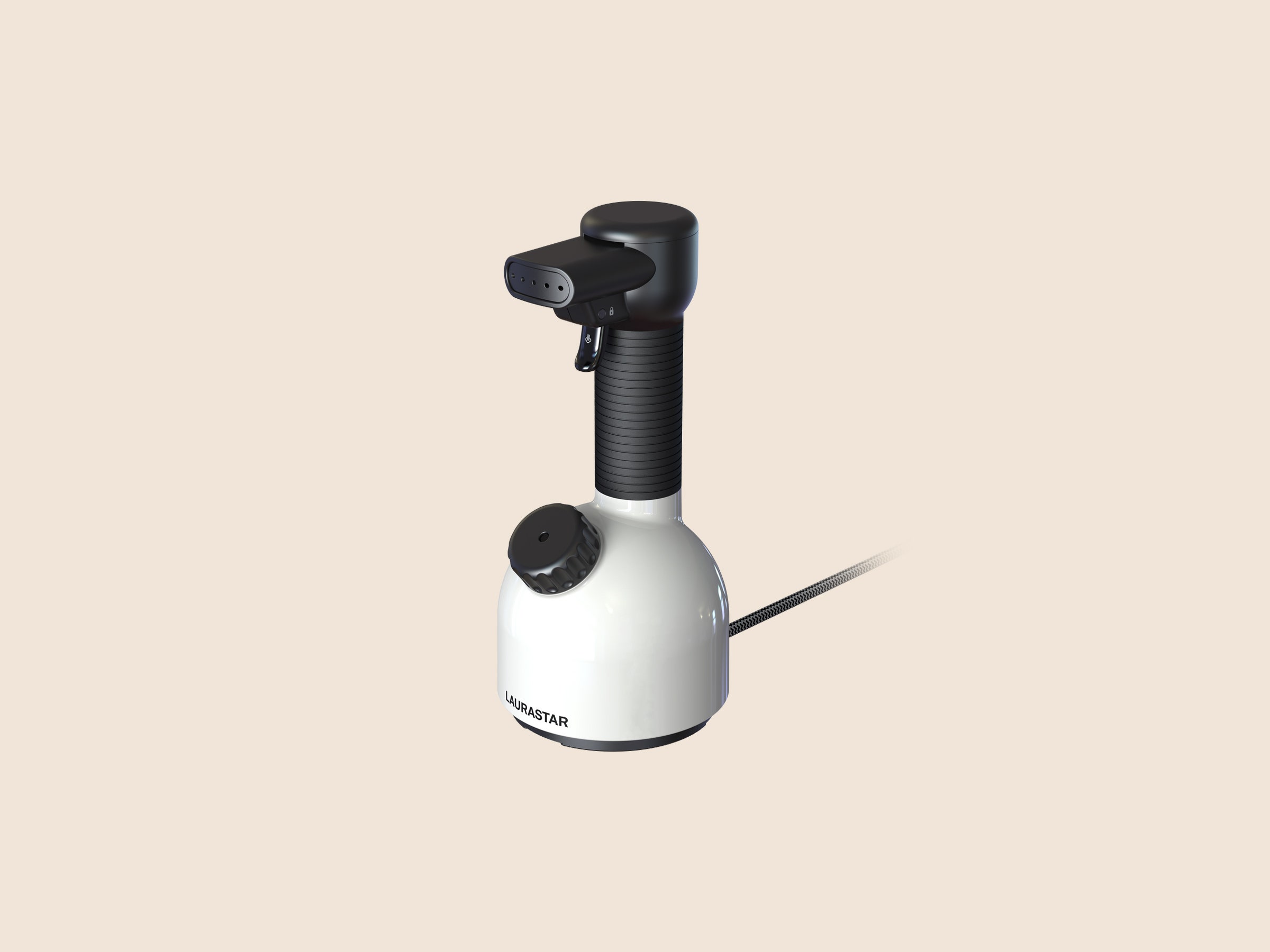I have to admit something: I am a serial clothes re-wearer. Nothing too crazy, mind you. This pertains almost exclusively to my dress shirts; if they're not stinky or wrinkly, I might try to get an extra day or three out of them. I do love a nice crisp shirt, though, so when I heard about a portable steamer from the manufacturer of my favorite fancy iron, I was intrigued.
Actually, it gave me a lot of feelings, all at once. The Iggi by Laurastar is a surprisingly good-looking handheld appliance with a nail-polish red (or white) base. The one I called in to review is pleasingly sturdy, unlike much of its cheap plastic competition; Laurastar commits to 10 years of repairs under its generous warranty. Even the cord is pleasingly natty, with a woven fabric cover. It's about as close to an objet d'art as you can get in the fabric-straightening world.
Also unique in this realm is that it's pressurized. While many cheaper models are like little electric kettles that sorta exhale the steam in the general direction of your clothes, this one is quite different. Fill it up, plug it in, squeeze the trigger, and steam shoots a couple feet straight out. Then again, you pay for all this. The Iggi costs $300, whereas you can pick up an excellent floor-standing (non-travel) clothes steamer for less than that amount or buy a well-rated handheld steamer for as little as $20.
Still, when someone tosses you the keys to a sports car, you don’t stand around yapping about the finer points of carburetors. You hop in and punch it. I grabbed a shirt, built up a literal head of steam in the Iggi, squeezed the trigger, and FWOOOOOSHHH! It's pretty fun! You hang the garment in front of you, then gently pull the bottom of it with one hand while using the other to zap the wrinkles by slowly waving the device back and forth like a paint sprayer.
I quickly got the feeling that it worked better on some fabrics than on others. So I called an expert to understand why and how she uses steam.
“I steam everything. It's convenient. It makes you look like you care,” says clothing designer Shari Noble. She runs Seattle's La Macón label and helped me with that incredible iron a few years ago. “It might not be the same effect as when you're ironing, but it's close.”
Noble says she likes the steaming effect so much she'll even hit the inside of lined leather jackets, but she doesn't steam exclusively. She prefers to iron linen and finds that cotton comes out crisper that way, but she loves the steamer for silk, velvet, and wool. If it's a really delicate item, she'll steam from the inside, which she finds keeps the presentation side of the fabric in perfect shape.
"Just don't shoot yourself in the face," she counseled.
Duly warned, I got rolling. At the suggestion of WIRED colleague Medea Giordano, I picked up an inexpensive favorite steamer made by URPower, a company that also makes elevated dog bowls, car seat covers, and essential oil diffusers. It costs $20, or 15 times less than the Iggi, and is one of those “tiny electric kettle” style steamers.

